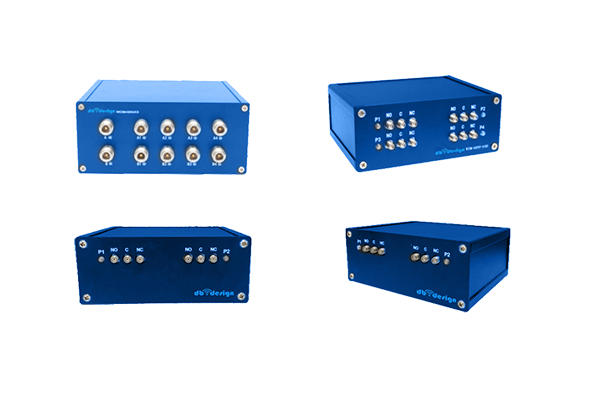
Pin diode devices are now regarded as essential parts in high-frequency circuitry given their inherent performance characteristics Their quick conductive to nonconductive switching and compact capacitance with limited insertion loss make them perfect for switches modulators and attenuators. The underlying principle of PIN diode switching involves controlling charge flow through the junction by biasing the device. The control voltage varies the depletion region dimensions at the junction and thereby alters conductive behavior. Varying the bias voltage facilitates reliable high-frequency switching of PIN diodes with small distortion penalties
PIN diodes are often used in elaborate circuit arrangements where strict timing and control are essential They are useful in RF filtering systems for choosing which frequency bands to pass or suppress. Also their capacity to manage high power signals makes them applicable to amplifiers power dividers and signal generators. Advances producing smaller and efficient PIN diodes have widened their roles in modern wireless and radar applications
Study of Coaxial Switch Performance
The design of coaxial switches is intricate and needs detailed assessment of numerous variables The performance is governed by the choice of switch type frequency operation and insertion loss properties. A good coaxial switch design aims to minimize insertion loss and maximize isolation across ports
To analyze performance one must evaluate metrics such as return loss insertion loss and isolation. These values come from combined use of simulations theoretical predictions and experimental validation. Detailed and accurate analysis underpins reliable functioning of coaxial switches in various systems
- Simulations combined with analytic methods and practical experiments are standard for coaxial switch evaluation
- Coaxial switch behavior is sensitive to temperature, impedance mismatch and assembly tolerances
- Innovative trends and recent advances in switch design emphasize metric improvements while lowering size and consumption
LNA Performance Enhancement Techniques
Optimization of LNA gain efficiency and overall performance is critical to achieve excellent signal preservation This requires careful selection of transistors bias conditions and circuit topology. Well engineered LNA circuits reduce noise influence and increase amplification while controlling distortion. Modeling simulation and analysis tools play a central role in evaluating the impact of design decisions on noise. Reducing the Noise Figure remains the design target to ensure strong signal retention with minimal added noise
- Selecting devices that exhibit low intrinsic noise is a primary consideration
- Establishing proper bias conditions with optimal settings minimizes noise within transistors
- Topology decisions critically determine how noise propagates in the circuit
Techniques of matching networks noise cancellation and feedback control contribute to improved LNA operation
Pin Diode Switch Based Signal Routing

Pin diode switch implementations yield flexible efficient routing of RF signals in diverse applications Their high-speed switching lets systems dynamically alter signal routing in real time. Key benefits include minimal insertion loss and strong isolation to limit signal deterioration during switching. PIN diodes are used in antenna switch matrices duplexers and phased array RF systems
Voltage control varies the device resistance and thus controls whether the path is conductive. While in the off state the diode creates a high impedance path that blocks the signal flow. Forward biasing the diode drops its resistance allowing the RF signal to be conducted
- Further advantages include fast switching low power requirements and compact design of PIN diode switches
PIN diode switch networks can be configured in multiple architectures and designs to support complex routing tasks. Combining multiple switch elements makes possible dynamic switching matrices enabling flexible routing
Performance Efficacy Assessment of Coaxial Microwave Switches

Testing and assessment of coaxial microwave switches are crucial to ensure efficient operation within systems. Many factors such as insertion reflection transmission loss isolation switching speed and spectrum range govern switch performance. Thorough evaluation entails measurement of these parameters under diverse operational environmental and testing circumstances
- Moreover the evaluation must factor in reliability robustness durability and environmental stress tolerance
- Finally results from comprehensive testing offer crucial valuable essential data to inform selection design and optimization of switches for particular applications
Thorough Review of Noise Reduction Methods for LNAs
Low noise amplifiers are fundamental in wireless RF systems as they amplify weak signals and reduce noise contributions. The review provides a comprehensive examination analysis and overview of noise reduction techniques for LNAs. We investigate explore and discuss chief noise sources including thermal shot and flicker noise. We also review noise matching feedback implementations and biasing tactics aimed at reducing noise. The review underlines recent breakthroughs like innovative materials and circuit architectures that achieve lower noise figures. Offering a thorough understanding of noise mitigation principles and methods the review helps designers and engineers build high performance RF systems
Rapid Switching System Uses for PIN Diodes

Their remarkable unique and exceptional electrical traits make them apt for high speed switching systems Low capacitance combined with low resistance produces rapid switching for applications requiring precise timing. Also PIN diodes respond proportionally to voltage which allows controlled amplitude modulation and switching actions. This flexible adaptable versatile behavior makes PIN diodes suitable applicable and appropriate for varied high speed roles They find use in optical communications microwave circuitries and signal processing devices and equipment
Coaxial Switch Integration with IC Switching Technology
IC based coaxial switch technology advances signal routing processing and handling in electronic systems circuits and devices. IC coaxial switch solutions orchestrate control management and directed signal flow through coaxial media while keeping high frequency performance and reduced latency. Miniaturized IC implementations provide compact efficient reliable and robust designs enabling dense interfacing integration and connectivity
- By carefully meticulously and rigorously applying these approaches designers can realize LNAs with outstanding noise performance enabling sensitive reliable electronic systems With careful meticulous and rigorous deployment of these approaches developers can accomplish LNAs with outstanding noise performance enabling trustworthy sensitive electronics Through careful meticulous and rigorous application of such coaxial switch methods engineers can design LNAs with top tier noise performance enabling dependable sensitive systems By meticulously carefully and rigorously applying these methods developers can produce LNAs with superior noise performance enabling sensitive reliable electronics
- Use scenarios include telecommunications data communication systems and wireless networks
- Coaxial switch IC implementations support aerospace defense and industrial automation applications
- Consumer electronics audio visual equipment and test and measurement systems are typical domains
Low Noise Amplifier Design for mmWave Systems

Designing for mmWave requires accounting for high attenuation and pronounced noise effects. Parasitic effects are dominant at mmWave thus careful layout techniques and component choices are crucial. Keeping input mismatch low and power gain high is critical essential and important in mmWave LNA designs. The selection of HEMTs GaAs MESFETs and InP HBTs substantially impacts attainable noise figures at mmWave. Further the design implementation and optimization of matching networks remains vital to achieve efficient power transfer and proper impedance matching. Paying attention to package parasitics is necessary since they can degrade LNA performance at mmWave. Applying low loss transmission lines and meticulous ground plane design is essential necessary and important to lower signal reflection and keep bandwidth
Modeling and Characterization of PIN Diodes for RF Use
PIN diodes operate as essential components elements and parts in diverse RF switching applications. Accurate precise and detailed characterization of these devices is essential for designing developing and optimizing reliable high performance circuits. The work involves analyzing evaluating and examining electrical characteristics like voltage current resistance impedance and conductance. The characterization includes frequency response bandwidth tuning capabilities and switching speed latency or response time
Furthermore moreover additionally accurate model and simulation development for PIN diodes is vital essential and crucial for behavior prediction in RF systems. Different numerous and various modeling strategies are available including lumped element distributed element and SPICE models. Selecting an appropriate model simulation or representation depends on the specific detailed application requirements and the desired required expected accuracy
Innovative Advanced Techniques for Low Noise Amplifier Engineering
Developing LNAs involves diligent consideration of circuit topology and components to obtain optimal noise performance. Emerging novel semiconductor developments have allowed innovative groundbreaking sophisticated design strategies that cut noise considerably.
These techniques often involve employing utilizing and implementing wideband matching networks adopting low-noise high intrinsic gain transistors and optimizing biasing schemes strategies or approaches. Additionally advanced packaging solutions and thermal management approaches are key to cutting noise contributions from external factors. Through careful meticulous and rigorous implementation of these approaches engineers can achieve LNAs with exceptional noise performance supporting sensitive reliable systems
